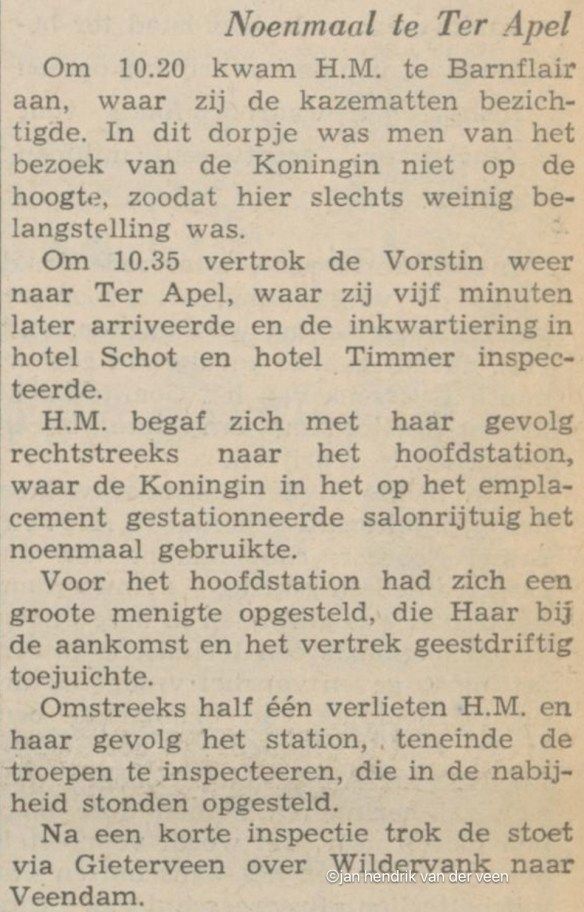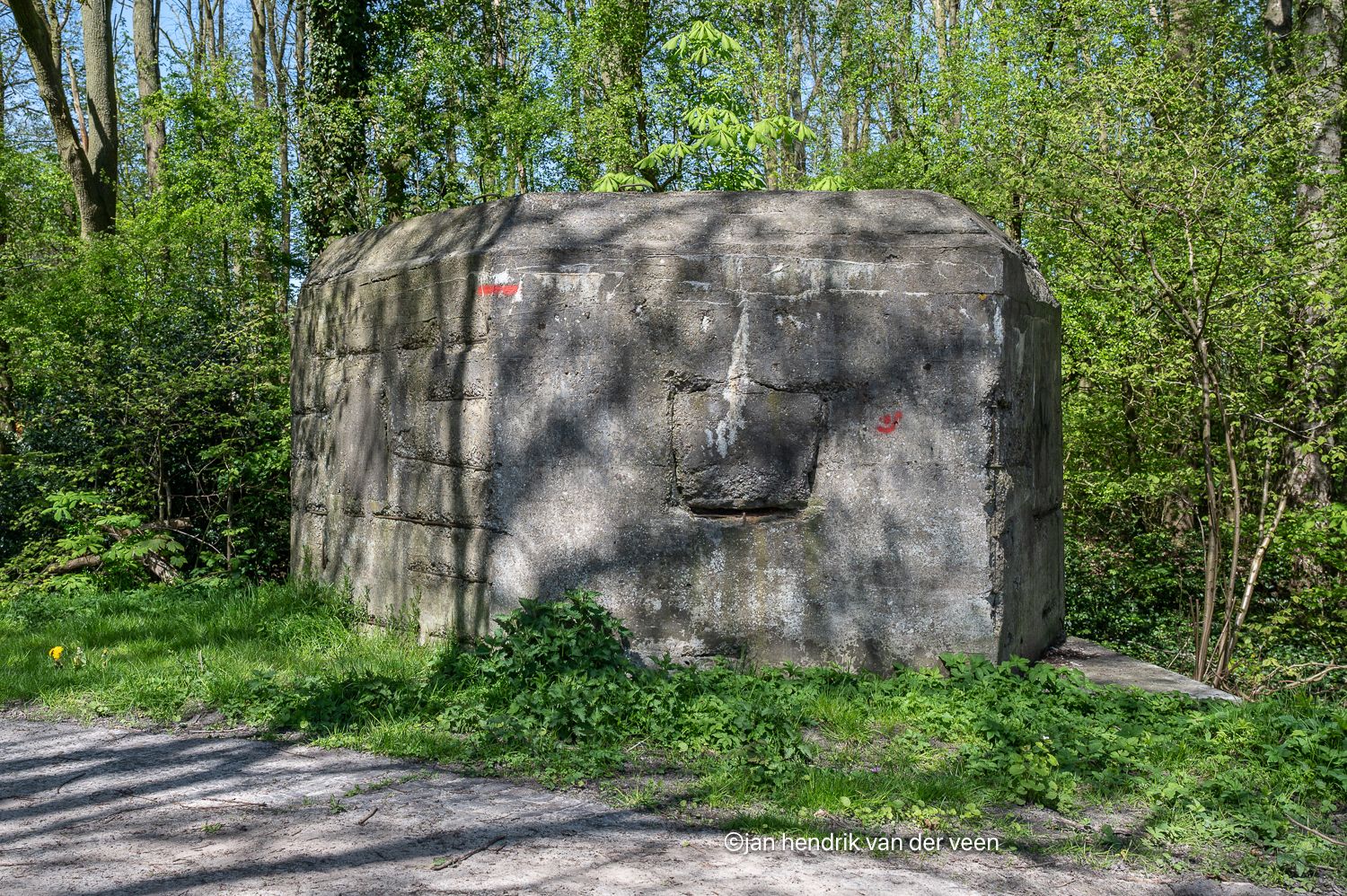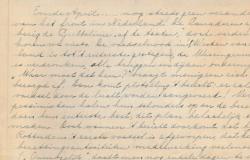The casemates described here were built in 1939 just before the outbreak of the Second World War in the provinces of Groningen and Drenthe.
The O-line and the Q-line were two Dutch Defense Lines (Resistance Lines). The lines mainly ran along waterways close to the Dutch-German border and their task was not so much to stop the German troops, but more to slow down the advance deeper into the Netherlands.The O-line was the front line in Groningen from the Dollard via Bourtange, Ter Apel to Barnfair and continues towards Coevorden. Once the Germans had broken through the line, they emerged from the second line of resistance, the Q-Line
The S3 casemate was a Dutch design of a casemate with three firing openings. The design came from the Central Inundation and Technical Bureau (CITB) and was completed in 1939. The armament consisted of a light machine gun type Lewis M.20, with the commander determining which firing slot would fire.
In June 1939 the Queen visited the defenses (Haagse Courant 22 June 1939)

The casemate consisted of a fighting space with a rear exit. There was an embrasure hole in the door for a gun. The embrasures of the casemate were for delivering frontal and flanking fire. They had a total field of fire of 190 degrees, or 70 degrees per loophole and a small overlap.
The unused loopholes could be closed with a steel shutter with a thickness of two centimeters.

In the photos the Casemates of:
Q-Lijn – Scheemderzwaag and Stadskanaal
O-Lijn – Booneschans, Wymeersterbrug, Rhederbrug, Vlagtweddersluis, Bourtange, Wollinghuizersluis, Jipsinghuizesluis, Sellngersluis, Ter Apel and Barnflair.
Source: Bunkerinfo. Photos: Jan Hendrik van der Veen
All photos of bunkers and barracks: click here.









